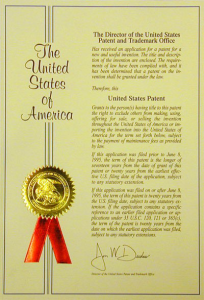Intellectual Property Strategy
Overview
Predictive Innovation builds more effective intellectual property protection than traditional approaches. Because Predictive Innovation can efficiently describe the entire idea space it helps you maximize the value of your intellectual property, minimize the risk, and neutralize threats from competition.
Goal
 The goal of an intellectual property strategy is to maximize the profits from your inventions and discoveries. This means you get the most value from each of the ways you can profit for the longest amount of time with the least cost. The only way to do this is to have a complete map of the idea space and the ways to profit. Patents alone are not enough to maximize your profits.
The goal of an intellectual property strategy is to maximize the profits from your inventions and discoveries. This means you get the most value from each of the ways you can profit for the longest amount of time with the least cost. The only way to do this is to have a complete map of the idea space and the ways to profit. Patents alone are not enough to maximize your profits.
Patents are related to the idea space in four ways. You can profit from each of the four ways. The best strategy provides options to use all four.
| Patented | Not Patented | |
|---|---|---|
| Patentable | Your patents | Unclaimed idea space |
| Not patentable | Other people's patents |
Public domain |
Even if you do not use all four you need to have options to use all four so that you are not limited by changes in the environment. Predictive Innovation provides the information needed to develop strategies for all four areas. Additionally, there are at least 15 types of tactics to use for each of the four areas. Predictive Innovation can also help you build the strategies to maximize your intellectual property.
Patents
 Patents are only a part of a complete intellectual property strategy. Patent infringement litigation is extremely expensive directly and indirectly so it should only be used for specific strategic purposes. In general, patent infringement litigation should be avoided whenever possible. A complete intellectual property strategy will allow you to choose litigation when it best serves your goals.
Patents are only a part of a complete intellectual property strategy. Patent infringement litigation is extremely expensive directly and indirectly so it should only be used for specific strategic purposes. In general, patent infringement litigation should be avoided whenever possible. A complete intellectual property strategy will allow you to choose litigation when it best serves your goals.
Proper use of patents help you maximize long term profits. Patents grant an inventor the right to enforce a monopoly on using an invention described in the patent applications. Being granted a patent does not protect your invention, it only gives you an option to use the courts to stop someone else from using your invention. Patent infringement litigation always creates an overall loss of value to shareholders and customers because time and money on the law suit is being diverted from creating profitable innovations.
The primary value of a patent for a well funded inventor is to cause competitors to avoid entering your claimed market. To effectively deter competitors a patent must cover the entire idea space without leaving any gaps which a competitor could use to subvert your patent.
Secondarily, your patent helps you avoid entering into an area claimed by another patent holder.
The Predictive Innovation Method allows you to define the entire idea space for an invention which allows you to create a strong mesh of interlocking patents plus extra layers of intellectual property protection beyond just patents and litigation.
How Predictive Innovation Protects Your IP
Predictive Innovation protects your intellectual property in 6 different ways.
- Patent Fence
- Alternatives to litigation
- Increase Overall Value
- Limit the damage from infringement
- Discourage litigation from patent trolls
- Avoid conflicts in the market place
These address all four areas of patentable and non-patentable ideas.
All members get the full 11 page report for free
